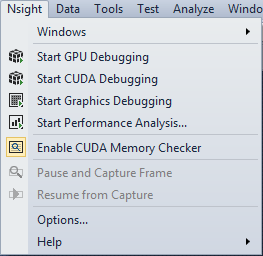
NVIDIA® Nsight™ Development Platform, Visual Studio Edition 3.2 User Guide
Send Feedback
In NVIDIA® Nsight™ Visual Studio Edition, the host is the term for the computer that is running Visual Studio, where your application is being built and debugged. After you install NVIDIA Nsight on your computer, you will see a new menu called Nsight on your Visual Studio taskbar.
Feel free to explore the various options on this menu. The items that are critical for debugging will be discussed in further detail in later topics.
After installing NVIDIA Nsight on the host machine, open Visual Studio and go to Nsight > Options to configure your settings.
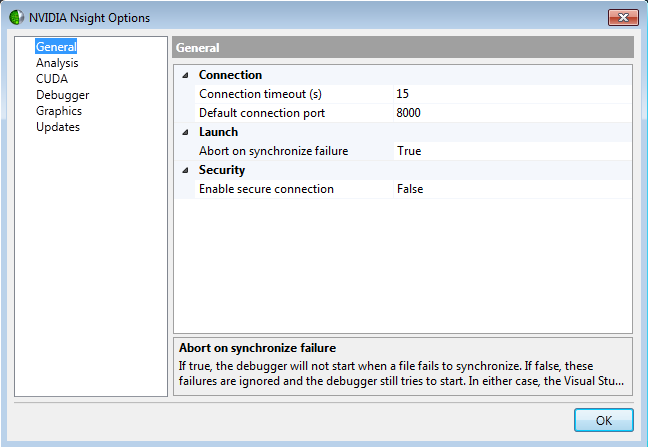
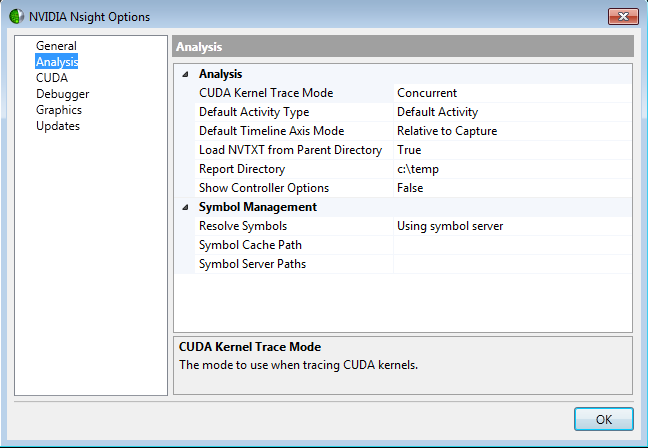
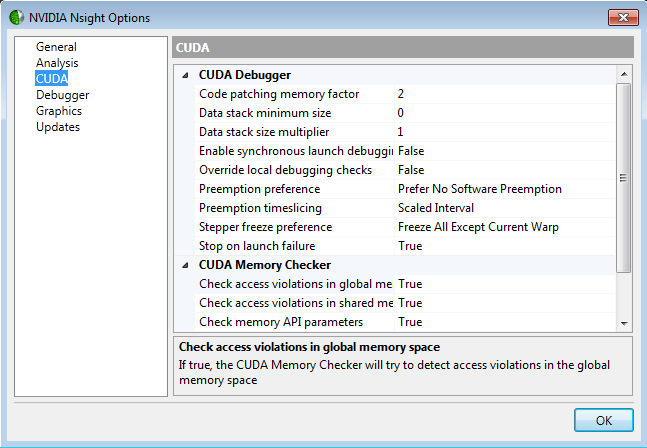
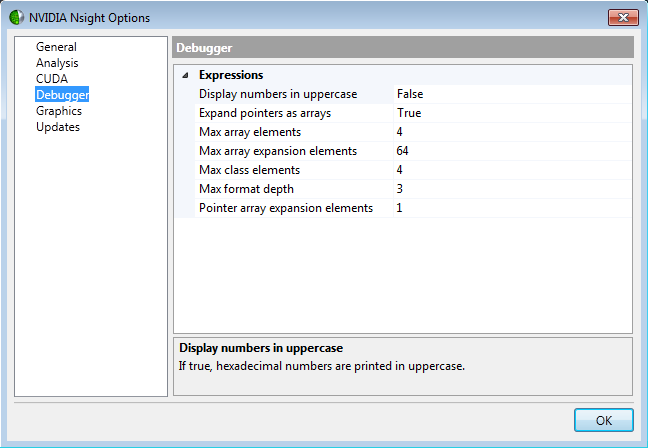
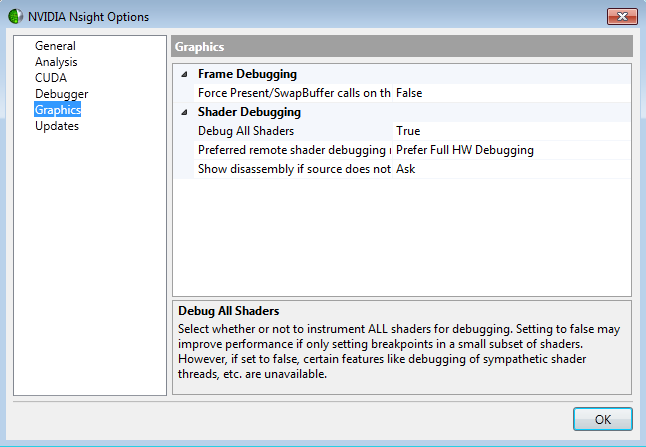

Click OK when you are finished configuring your options for NVIDIA Nsight.
After NVIDIA Nsight has been installed on the host machine, it will need to be configured. To do this:
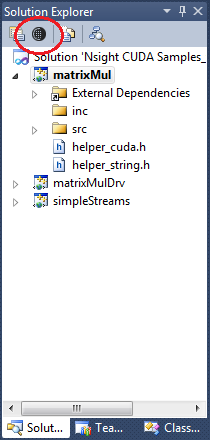




NVIDIA® Nsight™ Development Platform, Visual Studio Edition User Guide Rev. 3.2.131009 ©2009-2013. NVIDIA Corporation. All Rights Reserved.